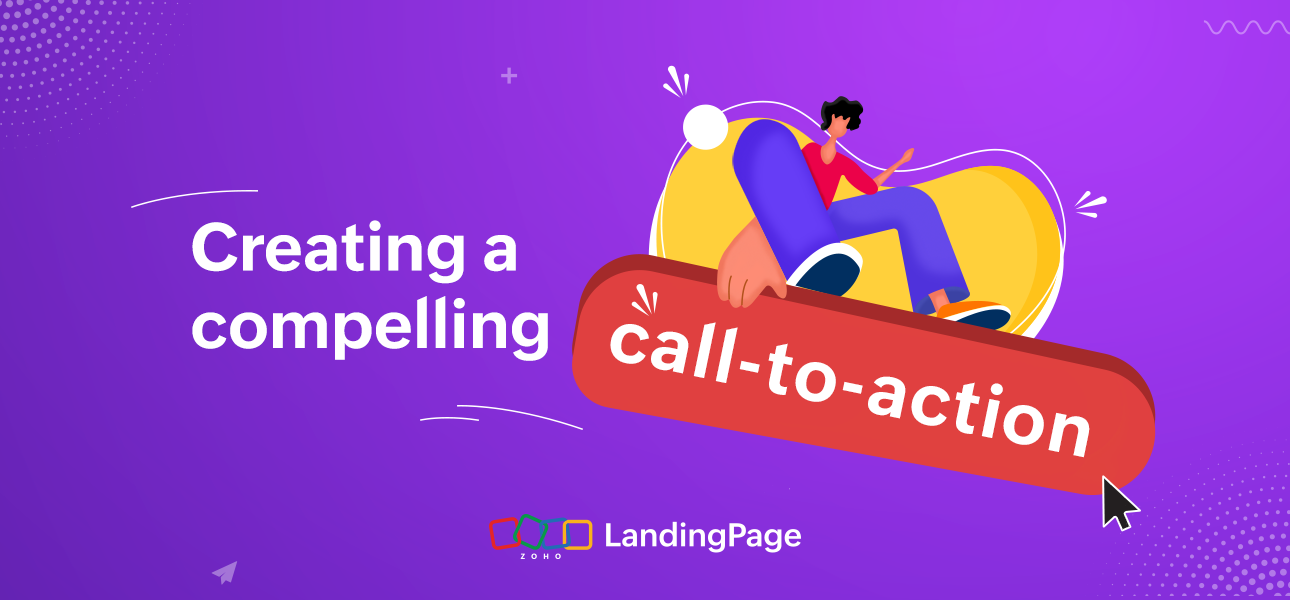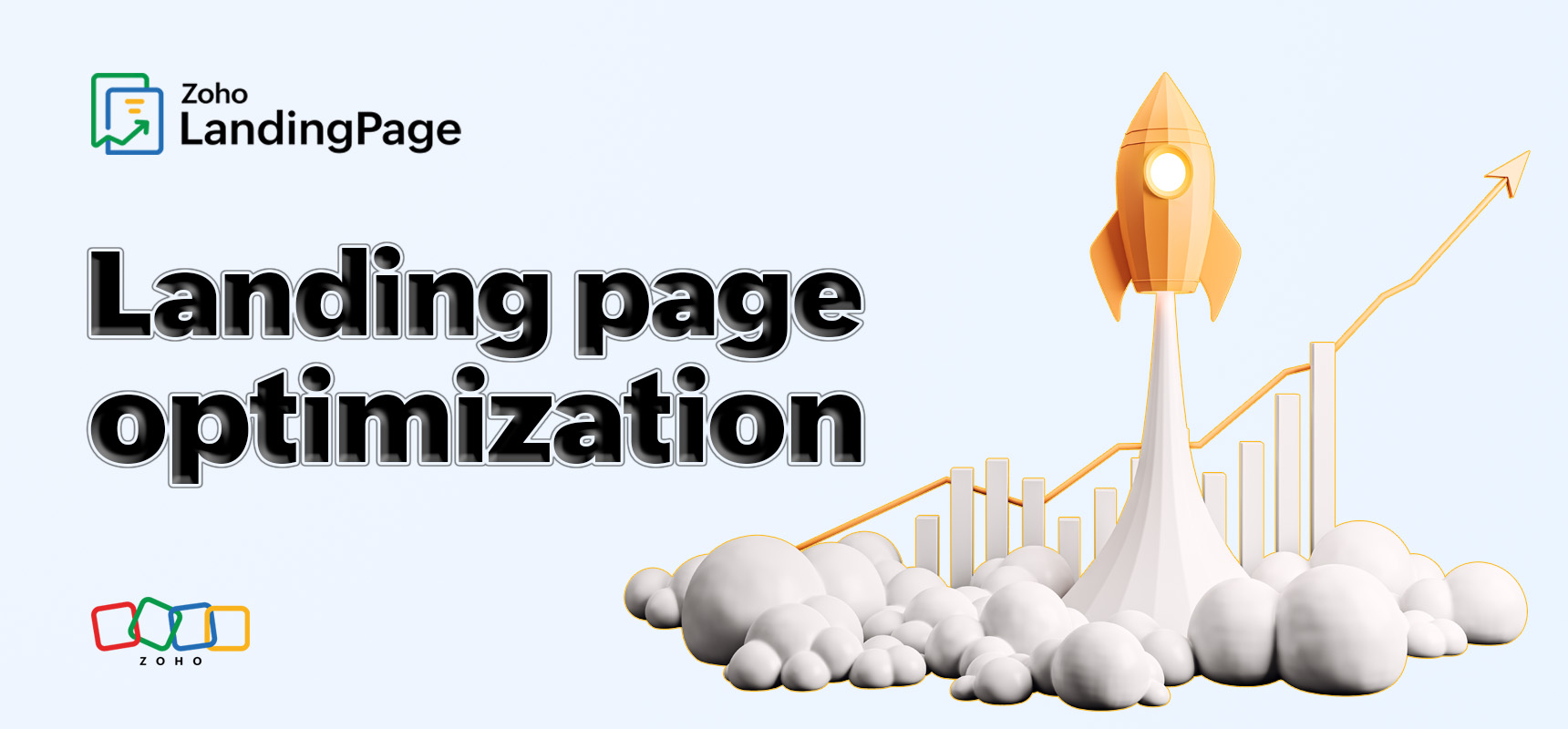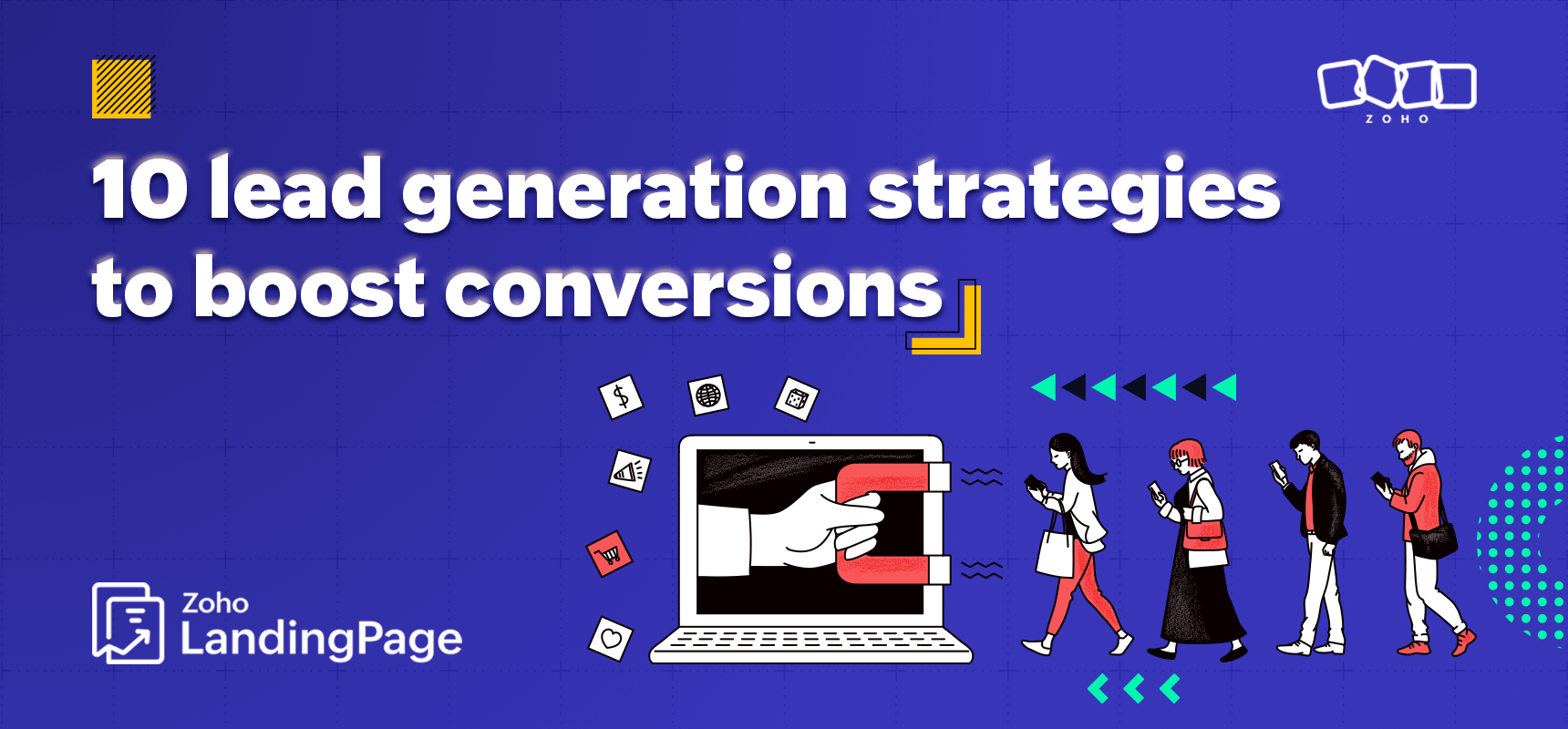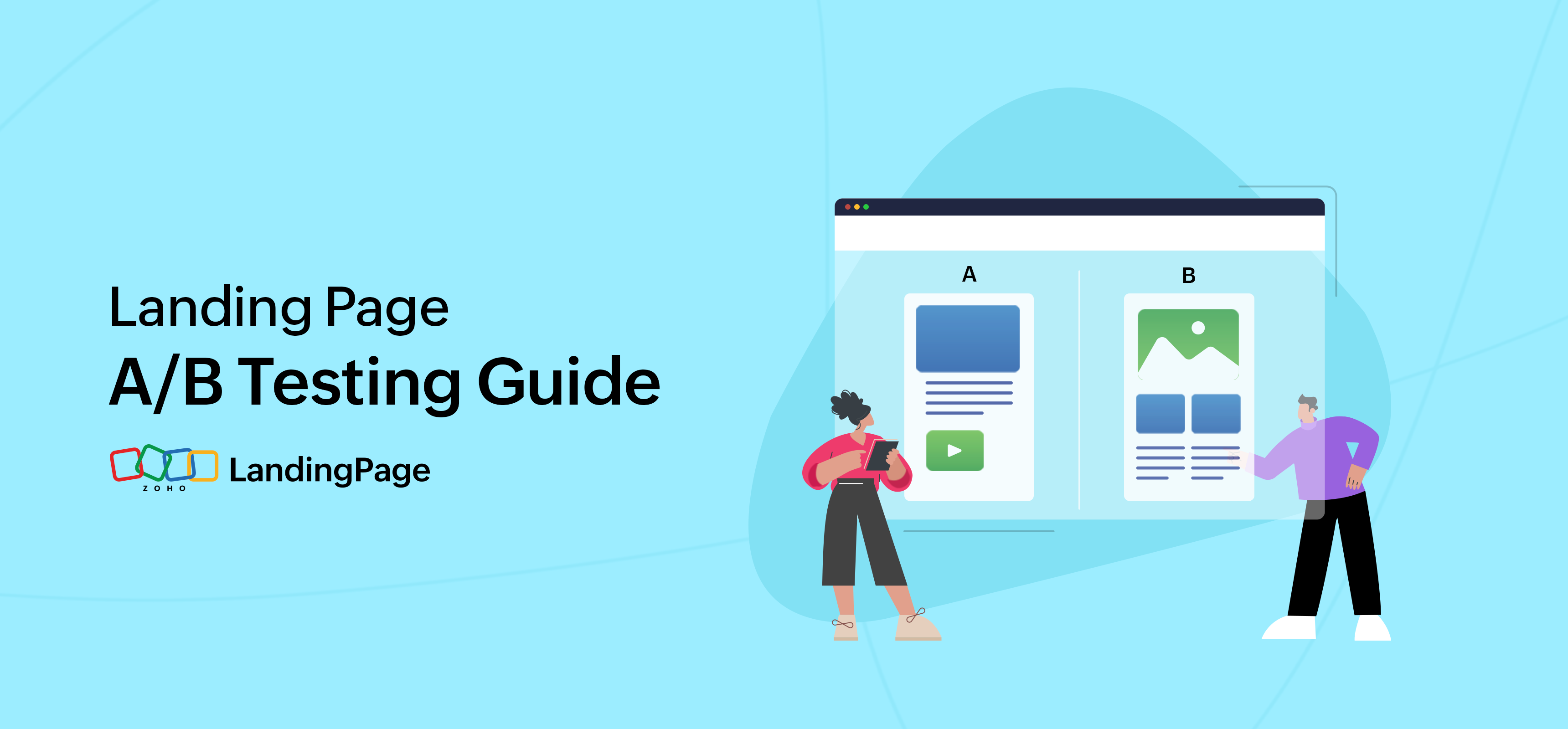Creating a compelling call to action
- Last Updated : November 9, 2023
- 1.0K Views
- 5 Min Read

Landing pages are powerful tools in your marketing arsenal but without the right call-to-action strategy, all your marketing efforts could be in vain.
The goal of any marketing campaign is to make visitors take action. The action can be anything from subscribing to a newsletter or signing up for a trial to making a product purchase. But turning visitors into customers definitely requires a much better understanding of CTAs and how to use them to improve conversions.
A great landing page sparks a conversation with potential customers, but only a powerful call to action seals the deal.
Designing your call to action
There is no single color that can guarantee conversions for your call-to-action button. Depending on the theme of your landing page, the CTA needs to be easily identifiable (a familiar CTA button style), preferably in a contrasting color but in cohesion with the overall style of the landing page. In this landing page by Audible, the CTA button stands out from the rest of the landing page because of it's contrasting color choice.
Using white space to draw attention to the call to action and positioning it in a clutter-free area of the landing page can make the CTA more compelling to potential customers, too.
Positioning your call-to-action button
A well-designed landing page typically has visitors looking for the next steps. Hence, positioning the call-to-action button at the right place can make all of the difference—introduce it too early and the CTA appears forced, too late and potential customer may start to lose interest.
Above or below the fold
The fold is a common marketing term for the browser window's bottom border. While most marketers would agree that placing the CTA above the fold is a no-brainer, it does not necessarily mean that all CTAs must be placed there. It works better for simple products or services that have minimal copy on the landing page. On a shorter landing page, placing the CTA above the fold makes sense.
With relatively complex products or services where the visitors require more information to make a decision, the CTA button can be positioned below the fold safely. Moreover, when the call to action appears before visitors have had a chance to get familiar with the product, it seems forced and disrupts the customer journey. Using directional cues on the landing page, businesses can easily guide prospects to the CTAs that are located well below the fold.
Both above and below the fold positioning works for CTAs, the decision depends on the nature of the product, industry, and the target audience. Wherever you place your CTA, A/B test them to see what yields the best results.
Call-to-action phrases
The right call-to-action phrase makes all the difference to your landing page. Often, it is the factor that decides whether a customer bounces away or takes action. Even if a visitor has just skimmed through your landing page, the CTA must bring their attention back to the subject.
Use action words
Powerful action-oriented words such as start, get, try, explore, learn, and subscribe clearly state what the user should do. These action-oriented words or verbs motivate customers to take action immediately.
Some examples are:
Get Started
Book an Appointment
Explore our collection
Speaking the customer language
This call to action does more than just grab the attention of visitors. By writing in the customer's voice, the call to action becomes more personal. Words such as “I,” “me,” or “my” motivate the visitors to read the CTA in their own voice and also helps increase the probability of conversion
Examples of this are:
Yes, I want to learn more
Count me in
Let's get started
Start my free trial now
Benefits and advantages
Spelling out the exact benefit or value that customers will get on the CTA button acts as an incentive to users. If people aren't sure about what the CTA button will deliver, it reduces the chance of taking action. If your landing page has a lead magnet such as a free e-book or guide, reiterating the same in the call to action can significantly boost conversions.
For example:
Get your free trial now
Claim your reward
Download e-book
Social proof
There is nothing more persuasive to a customer than the feeling of being left out. Businesses use this strategy using social proof and testimonials from similar customers. Using words such as "join" and "club" evokes the curiosity of visitors. The numbers and testimonials further push them to take action. This type of call to action is generally used in lead-generation landing pages.
Some examples of this are:
Join the community/club
Join hundreds of entrepreneurs who have subscribed to our email list
Persuading with emotions
The key to creating a great call to action is more than its positioning, color, and design. The call-to-action message must appeal to the customer's emotions and motivate them to take action. Below are some of the emotional strategies employed by businesses.
Clarity and control
If you want people to click your CTA buttons, make it very clear and transparent. When people feel like they are in control, they tend to take action. A lot of products and services offer free trials for customers so they can get familiar with the brand before making a purchase. In cases like these, it makes sense to reiterate the same in the CTA button.
In this landing page by Spotify, the words, "Get Spotify Free" clearly state what the customers can expect once they click on the button. The word "free" reassures them that they wouldn't have to pay in the next step.
Scarcity and urgency
If your customers are taking too long to decide whether they should buy your product or service, add an extra nudge to create a sense of scarcity and urgency. Incorporating words such as "now" or "limited" is an effective way to ensure visitors take action. Some landing pages also employ a countdown timer that motivates customers to act immediately.
Curiosity and anticipation
If the landing page evokes curiosity about your product or service, visitors will be more willing to give their email addresses, sign up for a trial, or make a purchase. In this particular landing page from Crazyegg, customer interest in the product is piqued because the call to action offers to solve a widespread problem faced by all business owners: measuring and improving website performance. Identifying a customer pain point, elaborating on it, and then offering a solution is a sure way to increase clickthrough rates and, in turn, conversions
A quick recap of call-to-action phrases
 **Save for later**
**Save for later**
Always test your call to action
Even if you have a great call-to-action strategy, A/B testing is the only way to determine if your landing page and CTA will yield the expected results. Creating variants where the color, size, text, and positioning of the call to action is changed and testing them with various sections of your audience can clearly show you which are the winning CTAs.
 Krithika
KrithikaContent Marketer @ Zoho LandingPage


